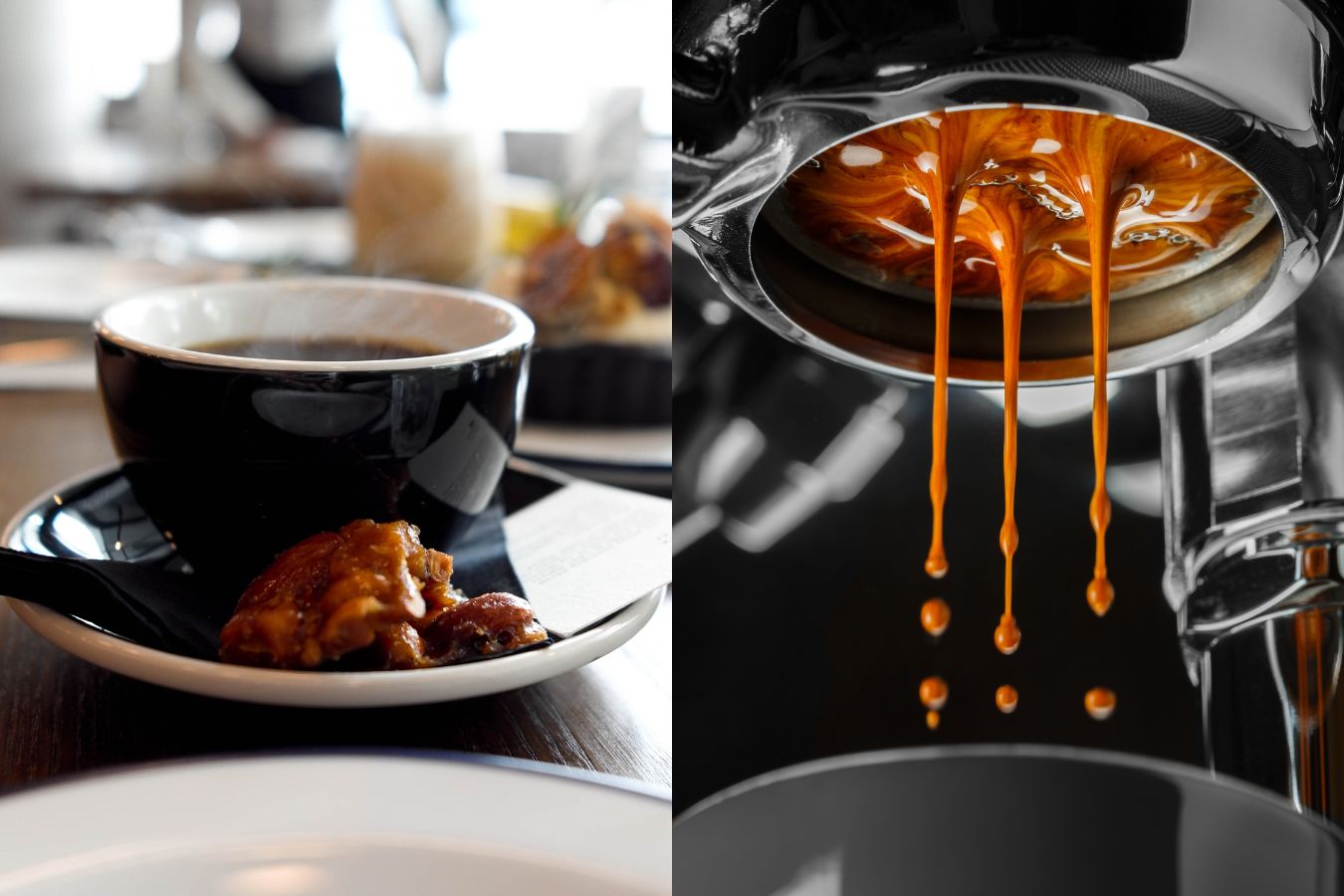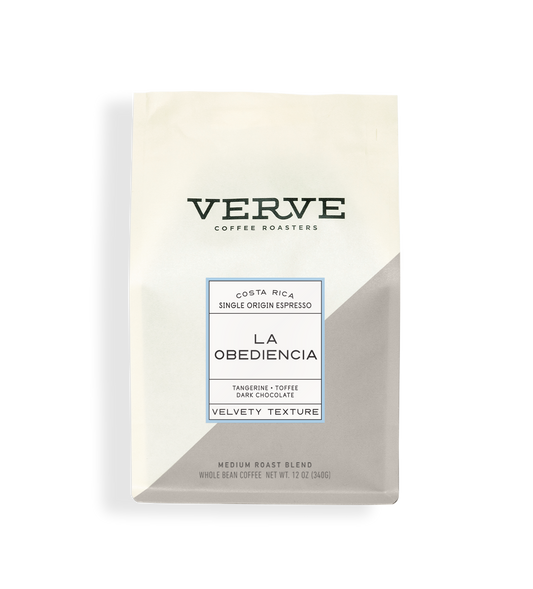The Coffee Lover’s Guide to SOE Single Origin Espresso Varieties
The Coffee Lover’s Guide to SOE Single Origin Espresso Varieties
Blog Article
Coffee Beans 101: Everything You Required to Find Out About Espresso and Blended Coffee Beans
When it comes to coffee, comprehending the nuances of espresso and blended beans can transform your everyday mug. From the expanding process to roasting strategies, every action plays a function in your coffee experience.
Recognizing Coffee Beans: Kinds and Ranges
When diving into the world of coffee, understanding the kinds and varieties of coffee beans is important for every lover. Arabica beans are recognized for their smooth, complicated flavors and lower high levels of caffeine content, making them a favored amongst coffee connoisseurs.
Ethiopian Yirgacheffe uses intense floral notes, while Colombian beans give a healthy taste account. By acquainting on your own with these beans and their tastes, you'll elevate your coffee experience and make even more enlightened options in your brewing trip.
The Growing Refine: From Seed to Bean
When you explore the journey of coffee, it all beginnings with seed choice techniques that set the foundation for top quality. From there, growing and harvesting play vital duties in making certain the beans flourish. Ultimately, handling techniques change those collected cherries into the coffee beans you like.
Seed Choice Methods
Picking the best seeds is vital for generating premium coffee beans, as it lays the foundation for the entire growing process. You ought to start by selecting seeds from respectable resources that prioritize quality and hereditary variety. Seek selections recognized to grow in your particular environment and soil problems. Take note of the seed's age and storage space problems, as fresh seeds tend to sprout far better. When feasible, go with organic seeds to decrease direct exposure to harmful chemicals. Take into consideration the disease resistance of different ranges, as this can substantially influence your return. Finally, do not wait to consult with regional farmers or professionals to gain insights into the best seed alternatives for your region. This understanding will boost your coffee-growing experience.
Cultivation and Harvesting
As you support your coffee seeds right into flourishing plants, recognizing the growing and harvesting process is vital for accomplishing the most effective taste and high quality. Begin by planting your seeds in well-draining dirt, preferably in a shaded area to safeguard them from straight sunshine. As your plants grow, preserve regular moisture, and be conscious of their requirement for nutrients. Prune consistently to promote air flow and healthy and balanced development.
When it comes time to harvest, look for ripe cherries, which commonly transform a vivid red. Hand-picking is commonly the most effective method to assure only the ripest cherries are chosen. Timing is vital; harvesting prematurely or too late can influence the taste account of your beans. Accept perseverance and treatment, as this is where high quality starts.

Handling Methods Explained
As soon as you've gathered your coffee cherries, the following crucial action is processing them to change those lively fruits into the beans you'll make. There are two primary methods: the damp procedure and the completely dry procedure. In the completely dry procedure, you spread the cherries out in the sunlight to completely dry, enabling the fruit to ferment and present one-of-a-kind tastes to the beans. On the various other hand, the wet process includes getting rid of the fruit instantly and fermenting the beans in water, resulting in a cleaner taste. After processing, the beans are hulled, sorted, and normally dried once more. Each technique affects the flavor account, so trying out both can aid you uncover your favorite mixture. Understanding these approaches is essential to enjoying your coffee experience.
Roasting Methods: Exactly How Taste Is Created
When it comes to toasting coffee beans, understanding roast degrees is vital to disclosing their one-of-a-kind flavors. Each toasting method influences the scent and enhances the flavor growth procedure, providing you a richer coffee experience. Let's check out how these factors come together to elevate your daily brew.
Roast Degrees Discussed
Roast levels play a necessary duty in shaping the flavor profile of your coffee. You'll enjoy bright acidity and fruity notes when you choose a light roast. As you move to a tool roast, you'll discover a balance of sweet taste and complexity, usually highlighting chocolate or caramel tastes. Dark roasts, on the various other hand, provide vibrant, great smoky characteristics with less level of acidity, making them durable and rich. Each level arises from various roasting times and temperatures, affecting the beans' chemical composition. By recognizing these levels, you can much better select a coffee that matches your taste preferences. Experiment with various roasts to uncover which one resonates with you, enhancing your overall coffee experience and pleasure.
Influence On Fragrance
The roast level not just affects the taste of your coffee however additionally considerably influences its scent. Each toasting strategy releases various volatile compounds, shaping exactly how your coffee scents. Additionally, the quality of the beans plays a critical role; freshly baked coffee launches much more aromatic oils, improving that attracting aroma.
Flavor Growth Refine
As you discover the flavor advancement process, you'll find that roasting methods play a crucial duty fit the taste profile of your coffee. The roasting temperature and time directly affect the level of acidity, sweet taste, and bitterness of the beans. Light roasts preserve even more of the bean's initial flavors, highlighting fruity and floral notes. Tool roasts balance acidity and body, offering an all-around taste. Dark roasts, on the various other hand, draw out strong, great smoky features while diminishing the bean's fundamental top qualities. During toasting, chemical reactions, like the Maillard response and caramelization, transform the beans and enhance their intricacy. Exploring with different roasting degrees can aid you discover your excellent mixture, so don't hesitate to taste and discover the rich range of flavors!
Coffee vs. Blended Coffee: Trick Differences
Espresso and blended coffee each deal unique experiences that provide to various tastes and choices. Coffee is a concentrated coffee made by compeling warm water through finely-ground coffee beans, causing a rich, bold flavor and a luscious layer of crema ahead. It's frequently appreciated as a shot or utilized as a base for drinks like coffees and lattes.
On the other hand, mixed coffee integrates different beans from various areas, creating a more well balanced taste profile. You'll usually locate blends that highlight level of acidity, sweet taste, or body, making them versatile for different brewing techniques. While espresso concentrates on intensity, blended coffee may provide a broader variety of flavors that can alter with each sip.
Eventually, your choice between espresso and mixed coffee boils down to your personal choice. Whether you crave a leisurely cup or a quick jolt, both options have something scrumptious to provide.

Brewing Techniques: Opening the Perfect Cup
When it concerns developing coffee, locating the right technique can transform your experience and boost your mug. Each brewing technique has its one-of-a-kind beauty and can substantially affect your coffee's flavor and aroma. Using a French press allows you to enjoy SOE a full-bodied and rich mixture, while a pour-over approach supplies a clean, bright cup with distinct flavors.
If you prefer coffee, investing in a top quality maker can help you understand the art of drawing shots. Alternatively, for benefit, a single-serve pod system provides rate without sacrificing preference.
Don't fail to remember concerning chilly mixture, which supplies a smooth, much less acidic coffee suitable for hot days. Experiment with various techniques to find what reverberates with your taste.
Tasting Notes: Determining Flavor Profiles
Just how can you genuinely appreciate your coffee if you do not understand what flavors to search for? Tasting notes are your overview to recognizing the complicated globe of coffee. When you drink, take notice of the preliminary tastes that hit your palate. You could detect fruity notes, like berry or citrus, or perhaps a nutty touch. As you remain to taste, discover how the flavors progress-- this is called the "coating." Some coffees could leave a chocolatey or caramel aftertaste, while others may have a brilliant, tidy finish.
Take into consideration the body of the coffee, as well; is it ventilated and light or thick and syrupy? Do not fail to remember acidity; a bright acidity can add vitality, while a reduced acidity could offer a smoother experience. By identifying these taste profiles, you'll deepen your connection with each mug, making coffee tasting a wonderful trip of exploration.

Tips for Choose and Storage Coffee Beans
Selecting and storing coffee beans correctly can considerably enhance your brewing experience. Start by choosing high-grade beans that fit your taste - SOE.
As soon as you have your beans, save them in an impermeable container to stop exposure to air, moisture, and light. A dark, cool location functions best, so prevent keeping them in the fridge or fridge freezer, as this can present wetness. Only grind the amount you need to maintain freshness; entire beans retain taste longer than pre-ground coffee.
Lastly, try to use your beans within two to four weeks after opening for peak taste. Complying with these ideas will guarantee your coffee stays pleasurable and tasty, elevating your day-to-day brew to new elevations.
Frequently Asked Questions
For How Long Do Coffee Beans Keep Fresh After Toasting?
Coffee beans stay fresh for regarding 2 weeks after roasting - SOE. You need to store them in an impermeable container, away from light and wetness. Afterwards, their flavor and scent start to decrease significantly

Can I Mix Different Coffee Bean Varieties?
Definitely, you can blend various coffee bean selections! Trying out with blends can boost tastes and develop a special preference account. Just make sure to balance the strengths and qualities of each selection for the best outcomes.
What Is the Ideal Grind Size for Espresso?
For coffee, you'll desire a great work size, about the structure of common salt. This permits excellent removal, leading to an abundant, tasty shot. Experiment a little bit to discover what matches your preference best!
How Does Altitude Affect Coffee Bean Taste?
Altitude affects coffee bean taste by influencing the development rate and chemical composition. Greater altitudes cause slower growth, which boosts level of acidity and intricacy, offering your coffee a unique and dynamic preference you won't neglect.
Are There Decaffeinated Versions of Coffee Beans?
Yes, there are decaffeinated versions of coffee beans. You can appreciate a rich coffee flavor without the caffeine kick. Just try to find "decaf" blends at your regional coffeehouse or specialized shop.
Coffee Beans 101: Everything You Need to Know About Coffee and Blended Coffee Beans.
When diving into the globe of coffee, understanding the kinds and varieties of coffee beans is essential for every fanatic.When it comes to toasting coffee beans, recognizing roast degrees is essential to revealing their one-of-a-kind flavors. Espresso is a focused coffee brewed by requiring hot water with finely-ground coffee beans, resulting in a rich, strong taste and a creamy layer of crema on top.On the other hand, mixed coffee incorporates different beans from different regions, creating a much more well balanced flavor profile.
Report this page